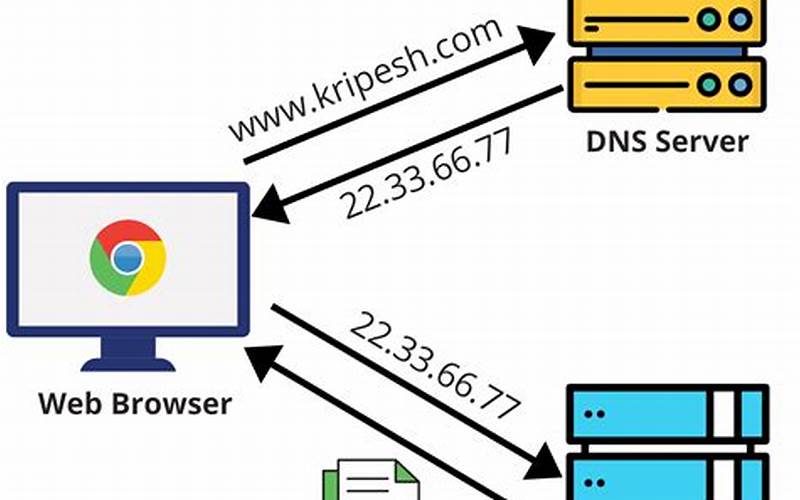Are you wondering how to join your computer to a domain? Joining a computer to a domain is a crucial step for businesses and organizations to establish a secure and efficient network environment. In this article, we will provide you with a step-by-step guide on how to join a computer to a domain, as well as the benefits and considerations of doing so. Let's dive in!
What is a Domain?
 Source: tse1.mm.bing.net
Source: tse1.mm.bing.netBefore we discuss how to join a computer to a domain, it's essential to understand what a domain is. In the context of computer networks, a domain refers to a collection of computers, users, and resources that are centrally managed by a server. It allows for a centralized authentication and authorization process, simplifying network administration tasks.
The Benefits of Joining a Computer to a Domain
 Source: tse1.mm.bing.net
Source: tse1.mm.bing.netJoining your computer to a domain offers numerous benefits that enhance security, ease network management, and improve user experience. Here are some key advantages:
1. Centralized User Management
 Source: tse1.mm.bing.net
Source: tse1.mm.bing.netBy joining a computer to a domain, user accounts can be centrally managed by the domain controller. This allows for streamlined user administration, including adding or removing users, resetting passwords, and managing access rights, all from a single location.
2. Enhanced Security
 Source: tse1.mm.bing.net
Source: tse1.mm.bing.netWhen a computer is joined to a domain, it becomes subject to the security policies defined by the domain administrator. This ensures that all computers on the domain adhere to the same security standards, including password complexity requirements, encryption protocols, and software updates. It also enables centralized monitoring and auditing of user activity and system events.
3. Simplified File and Printer Sharing
 Source: tse1.mm.bing.net
Source: tse1.mm.bing.netJoining a computer to a domain simplifies file and printer sharing within the network. Users can easily access shared files and printers without the need to set up individual permissions on each computer. This not only saves time but also ensures consistent access control across the network.
4. Single Sign-On (SSO) Capability
 Source: tse1.mm.bing.net
Source: tse1.mm.bing.netWith a domain-joined computer, users can enjoy the convenience of Single Sign-On (SSO). This means that users only need to log in once with their domain credentials to access various network resources, such as email, shared drives, and business applications. SSO improves productivity and reduces the burden of remembering multiple passwords.
5. Group Policy Management
 Source: tse1.mm.bing.net
Source: tse1.mm.bing.netGroup Policy is a powerful feature in Windows domains that allows administrators to enforce specific settings, configurations, and restrictions on domain-joined computers. This ensures consistent system configurations, software installations, and security settings across the network, reducing the risk of misconfigurations and unauthorized changes.
Step-by-Step Guide: How to Join a Computer to a Domain
Now that we understand the benefits of joining a computer to a domain, let's walk through the step-by-step process of doing so. Please note that the exact steps may vary slightly depending on your operating system version and network configuration.
Step 1: Prepare the Domain Environment
 Source: tse1.mm.bing.net
Source: tse1.mm.bing.netBefore joining a computer to a domain, ensure that the domain environment is properly set up. This involves having an active directory domain controller, a unique domain name, and a DHCP server (if applicable). Consult with your network administrator or IT department to ensure all prerequisites are met.
Step 2: Connect the Computer to the Network
 Source: tse1.mm.bing.net
Source: tse1.mm.bing.netEnsure that your computer is connected to the network either via an Ethernet cable or through a secure Wi-Fi connection. Having a stable network connection is necessary to communicate with the domain controller and complete the joining process.
Step 3: Access System Properties
 Source: tse1.mm.bing.net
Source: tse1.mm.bing.netTo join a computer to a domain, you need to access the System Properties settings. Right-click on the "This PC" or "My Computer" icon on your desktop or in the Start menu, and select "Properties" from the context menu. Alternatively, you can press the Windows key + Pause/Break key to open the System Properties window.
Step 4: Open the "Computer Name" Tab
 Source: tse1.mm.bing.net
Source: tse1.mm.bing.netIn the System Properties window, click on the "Computer Name" tab. This tab contains the settings related to the computer's name, domain, and workgroup membership.
Step 5: Click on "Change" Button
 Source: tse1.mm.bing.net
Source: tse1.mm.bing.netUnder the "Computer Name" tab, click on the "Change" button. This will open the "Computer Name/Domain Changes" window, allowing you to modify the computer's domain membership.
Step 6: Select "Domain" and Enter Domain Name
 Source: tse1.mm.bing.net
Source: tse1.mm.bing.netIn the "Computer Name/Domain Changes" window, select the "Domain" option if it's not already selected. Then, enter the domain name to which you want to join the computer. Make sure to type the domain name correctly to avoid any joining issues.
Step 7: Provide Domain Administrator Credentials
 Source: tse1.mm.bing.net
Source: tse1.mm.bing.netAfter entering the domain name, you will be prompted to provide domain administrator credentials. Enter the username and password of an account with sufficient privileges to join computers to the domain. This is typically an account designated as a domain administrator.
Step 8: Complete the Joining Process
 Source: tse1.mm.bing.net
Source: tse1.mm.bing.netOnce you have provided the domain administrator credentials, click on the "OK" button to initiate the joining process. The computer will communicate with the domain controller to verify the credentials and establish the domain membership.
Step 9: Restart the Computer
 Source: tse1.mm.bing.net
Source: tse1.mm.bing.netAfter successfully joining the computer to the domain, you will be prompted to restart the computer. Save any unsaved work and click on the "Restart Now" button to complete the process. Upon restarting, the computer will be fully integrated into the domain environment.
Considerations and Troubleshooting
 Source: tse1.mm.bing.net
Source: tse1.mm.bing.netWhile joining a computer to a domain is generally a straightforward process, there are a few considerations and potential issues to be aware of:
1. Network Connectivity
 Source: tse1.mm.bing.net
Source: tse1.mm.bing.netEnsure that your computer has a stable network connection before attempting to join a domain. Unstable or unreliable network connectivity can cause issues during the joining process.
2. DNS Configuration
 Source: tse1.mm.bing.net
Source: tse1.mm.bing.netProper DNS configuration is crucial for joining a computer to a domain. Ensure that your computer is using the correct DNS server address, which is typically the IP address of the domain controller. Incorrect DNS settings can prevent successful domain joining.
3. Firewall and Antivirus Settings
 Source: tse1.mm.bing.net
Source: tse1.mm.bing.netFirewall or antivirus software on your computer may interfere with the domain joining process. Temporarily disabling such software during the joining process can help identify and resolve any issues caused by them.
4. Domain Name Resolution
 Source: tse1.mm.bing.net
Source: tse1.mm.bing.netIf you are experiencing issues joining a domain using the domain name, try using the IP address of the domain controller instead. This helps bypass any DNS-related problems that may be affecting the domain name resolution.
5. Active Directory Trust Relationship
 Source: tse1.mm.bing.net
Source: tse1.mm.bing.netIn some cases, joining a computer to a domain may fail due to issues with the trust relationship between the computer and the domain. This often occurs when a computer's domain account password becomes out of sync with the domain controller. Resetting the computer account password or rejoining the domain can resolve this issue.
Conclusion
Joining a computer to a domain is a fundamental step in establishing a secure and efficient network environment. It offers centralized user management, enhanced security, simplified file and printer sharing, single sign-on capability, and group policy management. By following the step-by-step guide provided in this article and considering the potential considerations and troubleshooting tips, you can successfully join your computer to a domain and enjoy the benefits it brings to your network.
Post a Comment for "Joining a Computer to a Domain: A Comprehensive Guide"